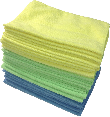Restoring Antique Porcelain Plates
Written by Lee Wyatt (last updated July 7, 2025)
Restoring antique porcelain plates is a phrase that can often fill many people with dread. This is understandable since these types of plates and dinnerware is often very fragile and expensive. Luckily, this is a task that can actually be very easy to do, as long as you follow a few simple precautions. The number one rule when dealing with antique porcelain plates is that you need to be careful when doing it. As long as you keep that in mind, as you follow these simple guidelines you will have no problem in getting your porcelain plates clean again.
- Be very careful. Being careful with antique porcelain plates cannot be stressed enough. The reason for this is that over time, as porcelain ages, it tends to become even more fragile. When cleaning antique porcelain, be sure that you do all cleaning by hand. Never, ever put antique porcelain plates into a dishwasher or other kind of machine. The risk for breaking them is too high.
- Dust. Begin your cleaning efforts by first dusting. This will help to remove the majority of the dirt and grime that a plate can be infested with, and will help to prevent any scratching or gouging by the fine grains of dust. Your best bet to get as much of the dust off of an antique porcelain plate as possible is to use a microfiber cloth and very gentle pressure.
- Wash gently. Once you have removed as much of the dust as possible it is time to begin washing the plate. Use only a mild dish soap and warm water. You should only need to use roughly 1/2 teaspoon of dish soap to about one pint of water to get your dishes clean. However, don't be afraid to change out the water as often as necessary to avoid smearing any dirt and grime around. Again, be very careful as you are washing your plate so that you don't drop it or break it.
- Pat dry. After you have washed one antique porcelain plate, and before you begin washing the next, take time to pat dry the plate. This is to get the plate as dry as possible, while also preventing any scratching of the plates that can inadvertently come from the cloth. Once dry set aside the plate in a safe location.
- Use mild acid. For particularly tough or difficult stains, you may want to use a very mild type of acid. The best kind to use are cleaners that contain sodium aluminum silicate as an ingredient. However, when using this kind of a cleaner, be sure that you use an even milder mixture than what may come on the packaging.
- Seek professional help. There is nothing wrong whatsoever with actually hiring a professional to restore your antique porcelain plates. These individuals typically have the expertise, tools, and materials to properly get your antique nice and clean. Often, it is worth the added expense to avoid any potential harm to your treasured heirlooms.
Author Bio
Lee Wyatt
Contributor of numerous Tips.Net articles, Lee Wyatt is quickly becoming a regular "Jack of all trades." He is currently an independent contractor specializing in writing and editing. Contact him today for all of your writing and editing needs! Click here to contact. Learn more about Lee...
Understanding Grades of Gas
One of the best ways to become an informed shopper is to understand the difference between the various products being ...
Discover More
Creating a Stress Free Work Environment
If there is one thing about work that almost everyone can agree on then it has to be that there are times when it is ...
Discover More
Cleaning Cat Litter
Have you ever noticed how you can almost always tell when you enter a house that has a cat? While it may be nice to think ...
Discover More
Cleaning Glass Tiles
Need help figuring out how to clean your glass tiles? The best way to keep them clean is by prevention, but you can still ...
Discover More
Opening and Cleaning a Stuck Decanter
Getting a stubbornly stuck decanter open and cleaned out can be quite the challenge. This tip provides some guidance on ...
Discover More
Cleaning Varnish from Glass
Varnish can get on glass in several different ways. Luckily, there are also several different ways to clean it off. Here ...
Discover More

Comments